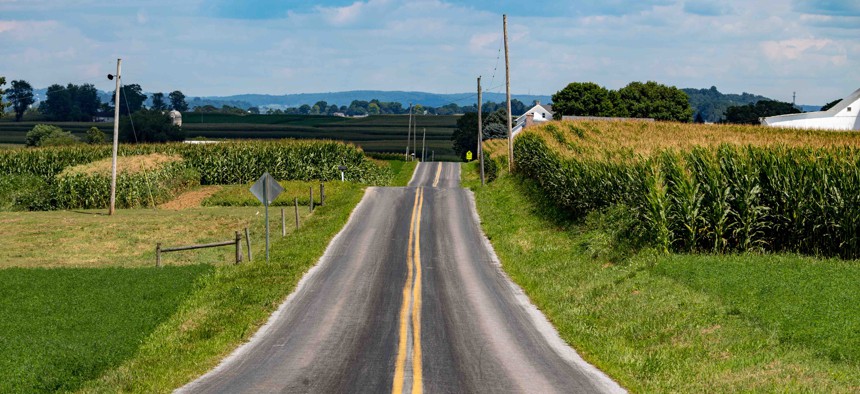Data Show Sluggish Economic Output in Smaller Counties

A rural road in Pennsylvania. shutterstock

Connecting state and local government leaders
For the first time, the Bureau of Economic Analysis has released GDP figures for all of the nation's counties.
Counties with fewer than 100,000 residents were more likely than their larger peers to have seen declines in economic output between two recent years featured in a new federal data set.
The U.S. Bureau of Economic Analysis for the first time last week released gross domestic product, or GDP, data for all of the nation's 3,113 counties. The statistics only cover 2012 through 2015. That makes them somewhat dated. But the share of small counties with falling GDP numbers in 2015 is one aspect of the statistics that stands out.
BEA describes the figures as "prototype" statistics, and says it's planning a release with more timely data next December.
In an overview of the data, the bureau breaks counties into three categories, "small," "medium," and "large," based on population.
Of the 138 large counties, with populations over 500,000, only 13, or about 9 percent, saw GDP decreases in 2015, compared to 2014.
And among the 461 medium counties, with populations between 100,000 and 500,000, 120, or about 26 percent, experienced decreases in economic output between those same two years.
But of the 2,514 small counties covered by the release, those with fewer than 100,000 people, 1,026, or about 40 percent saw economic output drop in 2015, compared to 2014.
The GDP statistics are based on inflation-adjusted dollar amounts.

Brian Namey, a spokesman for the National Association of Counties, cautioned in an email against drawing broad conclusions based on a single economic indicator.
He pointed to a report NACo issued last year about county economies that used 2016 figures from the firm Woods and Poole Economics, Inc., which specializes in long-term county economic data.
The report says that in 2016, almost eight in 10 county economies had returned to their pre-recession GDP levels and that while economic output growth was slower than it was in 2015 in almost two-thirds of counties, virtually none had GDP declines.
It added that the counties where GDP had not recovered to pre-recession levels had fewer than 50,000 residents and were mainly located in southern states, including Georgia, Kentucky, Mississippi, North Carolina and Virginia.
"The bottom line is that we continue to face economic, social and community impacts from the Great Recession," Namey said. "As well as economic dislocations from the manufacturing sector and shifts in natural resource economies like timber, coal and even agriculture."
A full copy of the BEA release, which includes economic output figures for specific industries within each county, can be found here. The bureau is seeking feedback on the statistics.
Bill Lucia is a Senior Reporter for Government Executive's Route Fifty and is based in Washington, D.C.

NEXT STORY: ‘Progressive’ Tax on Inherited Wealth Could Net 33 States as Much as $6.1B





